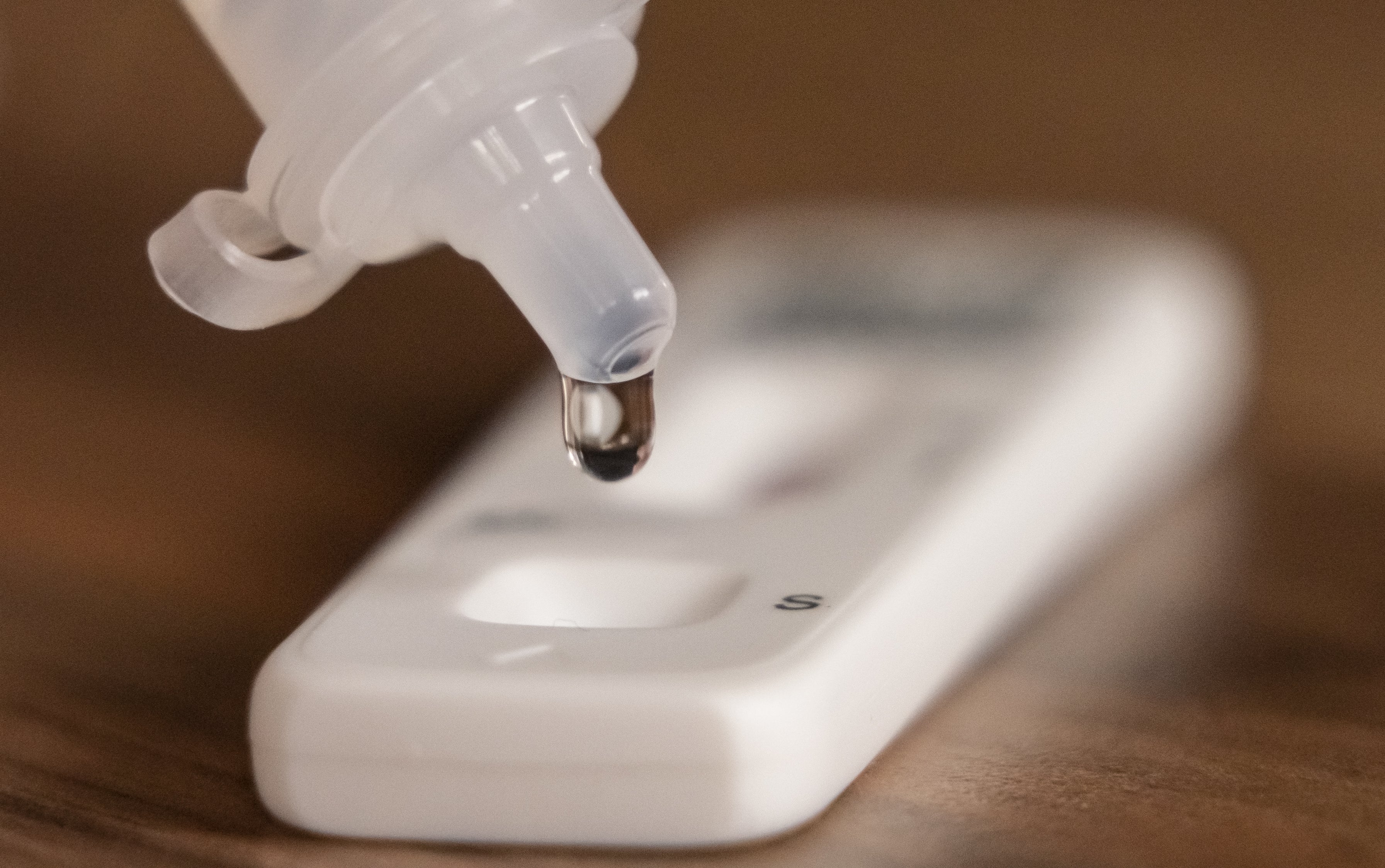One in 25 teachers and social care workers self-isolating at end of January
Nearly one in 20 of the working-age population in England were in self-isolation at the peak of the Omicron wave.

Your support helps us to tell the story
From reproductive rights to climate change to Big Tech, The Independent is on the ground when the story is developing. Whether it's investigating the financials of Elon Musk's pro-Trump PAC or producing our latest documentary, 'The A Word', which shines a light on the American women fighting for reproductive rights, we know how important it is to parse out the facts from the messaging.
At such a critical moment in US history, we need reporters on the ground. Your donation allows us to keep sending journalists to speak to both sides of the story.
The Independent is trusted by Americans across the entire political spectrum. And unlike many other quality news outlets, we choose not to lock Americans out of our reporting and analysis with paywalls. We believe quality journalism should be available to everyone, paid for by those who can afford it.
Your support makes all the difference.Around one in 25 people in the UK working in social care, teaching and education were likely to have been self-isolating because of Covid-19 at the end of last month, new figures show.
Some 4.0% of social care workers were self-isolating on January 29, up from 2.3% two weeks earlier, along with 3.9% of teaching and education staff, up from 2.0%.
These were the highest estimates of self-isolation among all parts of the workforce, with the teaching sector having climbed above the level seen at the peak of the Omicron wave in early January (3.5%).
The figures, which have been published by the Office for National Statistics (ONS), are the first of their kind to estimate the proportion of people self-isolating in different types of employment.
Along with teaching and social care, levels of self-isolation rose among health care workers, up from 2.1% on January 15 to 3.6% by January 29.
There were signs of increases across all other work sectors, but these trends “remain uncertain”, the ONS said.
The retail sector had the lowest estimated percentage of the workforce in self-isolation, at 2.2%, up from 1.5%.
The figures also show that at the peak of the Omicron wave on January 3, nearly one in 20 – 4.7% – of the entire working-age population in England were likely to be in self-isolation.
This had dropped to 2.1% by January 17, but had risen to 2.7% – around one in 37 – by January 29.
There is a similar pattern in the other three nations, though levels of self-isolation vary considerably and there is “high uncertainty” about the trend in the most recent two weeks, the ONS said.
In Scotland, the proportion of people of working age who were self-isolating peaked at 6.4% on January 2, or around one in 16, the highest level experienced by any nation so far in the recent wave of infections.
By January 21 this had fallen to 1.8%, but then started to rise at the end of month, reaching 2.4% by January 29.
Wales saw a peak of 4.2% of the working-age population in self-isolation on January 1, dropping to 1.7% by January 17 then increasing to 2.7% by January 29.
In Northern Ireland levels peaked at 4.0% on January 2, fell to 2.3% by January 16 and stood at 2.7% on January 29.
All estimates are based on data collected as part of the ONS weekly Covid-19 infection survey, and are based on individuals in private households.